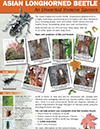Asian longhorned beetle: An unwanted invasive species
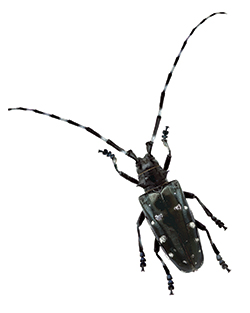
The Asian longhorned beetle (ALHB, Anoplophora glabripennis) is a highly destructive wood-boring pest of maples and other hardwood trees including poplar, birch and willow. ALHB infests and kills healthy trees, devastating urban and rural communities.
Adult beetles are 20–35 mm long, shiny black, with up to 20 white spots on each wing cover.
Signs and symptoms





running from recent egg laying sites.

Note teeth marks.

ALHB is native to Asia and can be introduced into Canada with infested wood packaging material (e.g. wooden pallets, crates, boxes, etc.). Once in a new environment, ALHB can disperse naturally or spread long-distance through transport of infested wood products including firewood and logs.
You can help protect your community from this invasive insect:
- check trees for evidence of ALHB
- collect suspect ALHB specimens, if found
- report suspect ALHB or ALHB tree damage to 1-800-442-2342
- don't move firewood
Not Asian longhorned beetle
Banded alder borer
- Native to BC
- Similar in size to ALHB, but flattened and has alternating transverse black and gray bands
- 20 to 35 mm long
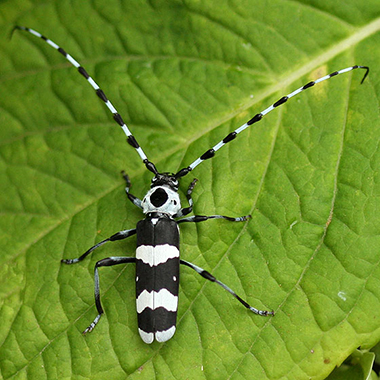
Western conifer-seed bug
- Across Canada
- Reddish-brown to gray-brown
- Pines and leaf pattern on legs
- Up to 20 mm long
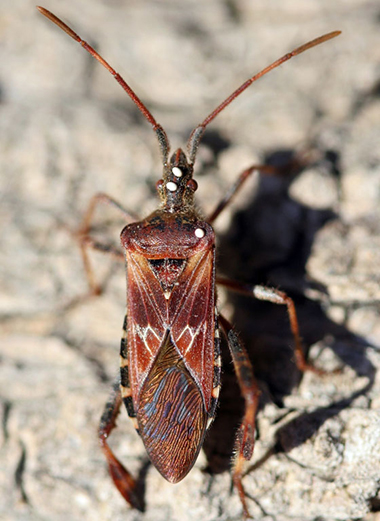
Pine sawyers
- Across Canada
- Brown or black but not shiny
- Wing covers appear pitted, not smooth like ALHB
- Smaller (18 to 27 mm) than ALHB
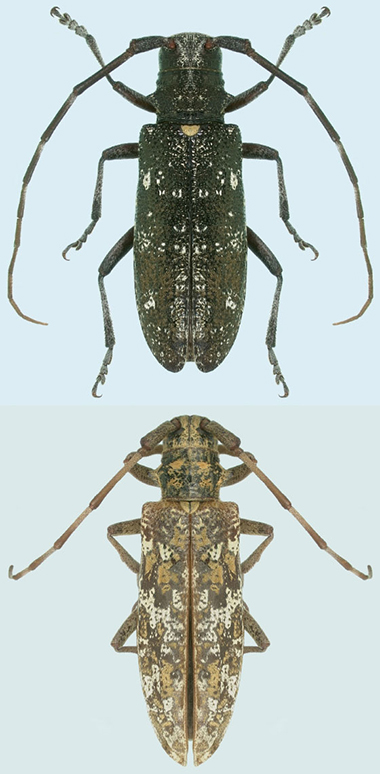
More information
Photo credits
- M. Bohne
- D. Cappaert
- D. Haugen (Bugwood.org)
- N. Wright
- K. Bolte
- B. Gill
- T. Poiré
- L. Schimming
- M.T. Smith
- Date modified:
